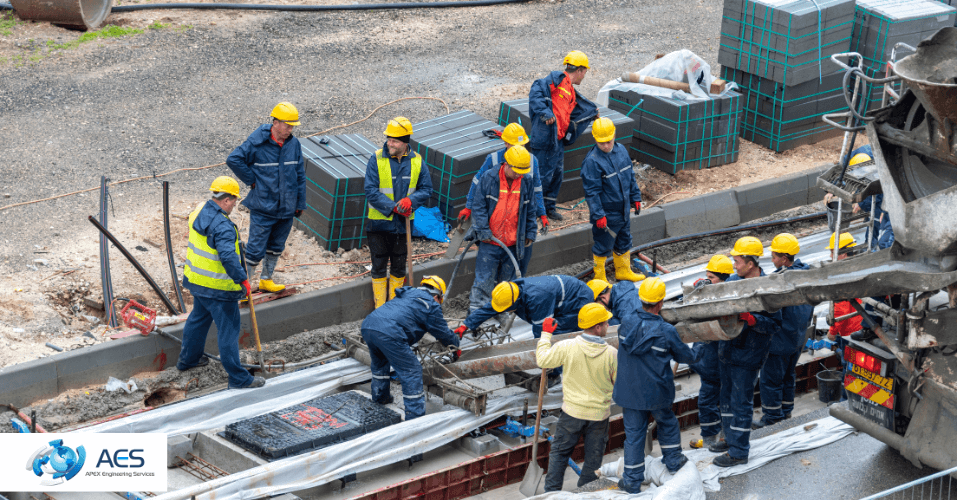In the past, railway inspections were time-consuming, expensive, and occasionally dangerous. Apex Engineering Services is working to change that, though. Rail infrastructure inspections are now safer, quicker, and more precise than ever thanks to their use of UAVs, or drones. These advanced technologies are revolutionising the way the UK operates its rail networks.
Here’s how Apex’s UAV rail inspections, are driving change across the UK rail network.
Changing the Face of Rail Inspections
Rail lines and infrastructure of projects can now be inspected more intelligently. Without anyone on the tracks, their drones gather comprehensive data from the sky. This represents a significant change from earlier approaches, which frequently called for teams to physically enter dangerous or challenging-to-reach locations.
Teams can prevent delays and save time by using this Rail drone inspection in the UK. There is also a significantly reduced risk to human safety because there is less requirement for manual labour on-site.
Safety Comes First
Safety is one of the main advantages of selecting UAV rail inspections. Working on live tracks is a common part of traditional train inspections. This is quite risky. Sometimes inspectors have to wait for trains to stop moving or get authorisation to enter the tracks. Projects become more stressed and delayed as a result.
This issue is resolved with Apex drones. Without creating any hindrance in train operation, they are able to collect all the necessary data from above.
Boosting Accuracy and Data Quality
Examining the rails is not the only one aspect of an inspection. But rather their goal is to provide engineers with exact, and detailed information so they may make a proper decision. Apex UAVs fulfil the strictest requirements set by Network Rail. The drones' ability to measure within a few millimetres is more than sufficient for the majority of infrastructure inspections.
With UAV rail inspections, issues can be identified early. The drones quickly detect any irregularities, such as a tiny crack in a bridge or a misaligned track. Hence, with this knowledge, repairs may be made more quickly and larger problems can be avoided later.
Real-Time Access and Fast Decisions
The speed at which data is delivered is yet another significant benefit of prioritising Rail drone inspection in the UK. Teams had to wait days or even weeks for results when using traditional surveys. These days, UAV data is frequently accessible on the same day. Managers and engineers have remote access to it. This enables them to act quickly on any difficulties and make decisions.
In the rail sector, this speed is crucial. Decision-making delays may result in higher repair expenses or longer outages. The UAVs from Apex Engineering Services minimise that pause and provide an infrastructure management strategy.
Supporting the Environment and the Future
UAVs are less harmful to the environment. Around the railroads, there is less noise and less interference with the environment. This promotes more environmentally friendly railway management.
Apex Engineering Services is also leading the road to the future with UAV rail inspections. Their method demonstrates how outdated systems can be improved with new technologies. The UK's deployment of UAVs could be a model for other nations looking to modernise their train networks.
What are the common questions that people have for Apex Engineering Services?
-
What are UAVs and how are they used in rail infrastructure inspections?
UAVs, or Unmanned Aerial Vehicles (commonly known as drones), are flying devices equipped with cameras and sensors. In rail inspections, they are used to collect detailed images and data from above, allowing engineers to check tracks, bridges, tunnels, and other structures without sending workers onto the railway lines.
-
How do UAVs improve safety during rail inspections?
UAVs help keep workers off live railway tracks, which reduces the risk of accidents. Since inspections can be done from the air, there is no need to stop trains or close lines, making the process safer for both staff and passengers.
-
Are UAV inspections accurate enough for rail projects?
Yes, UAVs used by companies like Apex Engineering Services offer accuracy. This level of detail meets the high standards required by Network Rail and allows for precise checks on track alignment, cracks, and structural wear.
-
What are the cost benefits of using UAVs for rail inspections?
UAVs reduce the need for large teams, equipment, and track closures, all of which are costly. They speed up the inspection process and help spot issues early, which prevents expensive repairs or delays in the future.
-
Can UAVs inspect all parts of rail infrastructure?
UAVs can inspect a wide range of rail components, including tracks, overhead lines, tunnels, bridges, and nearby vegetation. Their flexibility and ability to fly into hard-to-reach areas make them ideal for full-scale infrastructure monitoring.
Conclusion
The UAVs are transforming the entire rail line inspection process, not simply the way we do it. In the UK, these drones are setting the standard for safety, accuracy, speed, and cost-effectiveness. The engineers of Apex ensure that repairs are made before issues worsen and help keep the railroads operating properly.
That is why, the experts of Apex engineering services use UAV rail inspections to provide a clear way ahead as the rail sector deals with new demands and difficulties. The UK's train system will have a smarter, safer, and more effective future. So, reaching out to AES is the best option especially in nowadays where usage of advance technology is necessary for accuracy.
